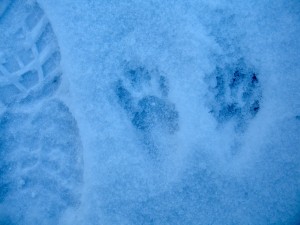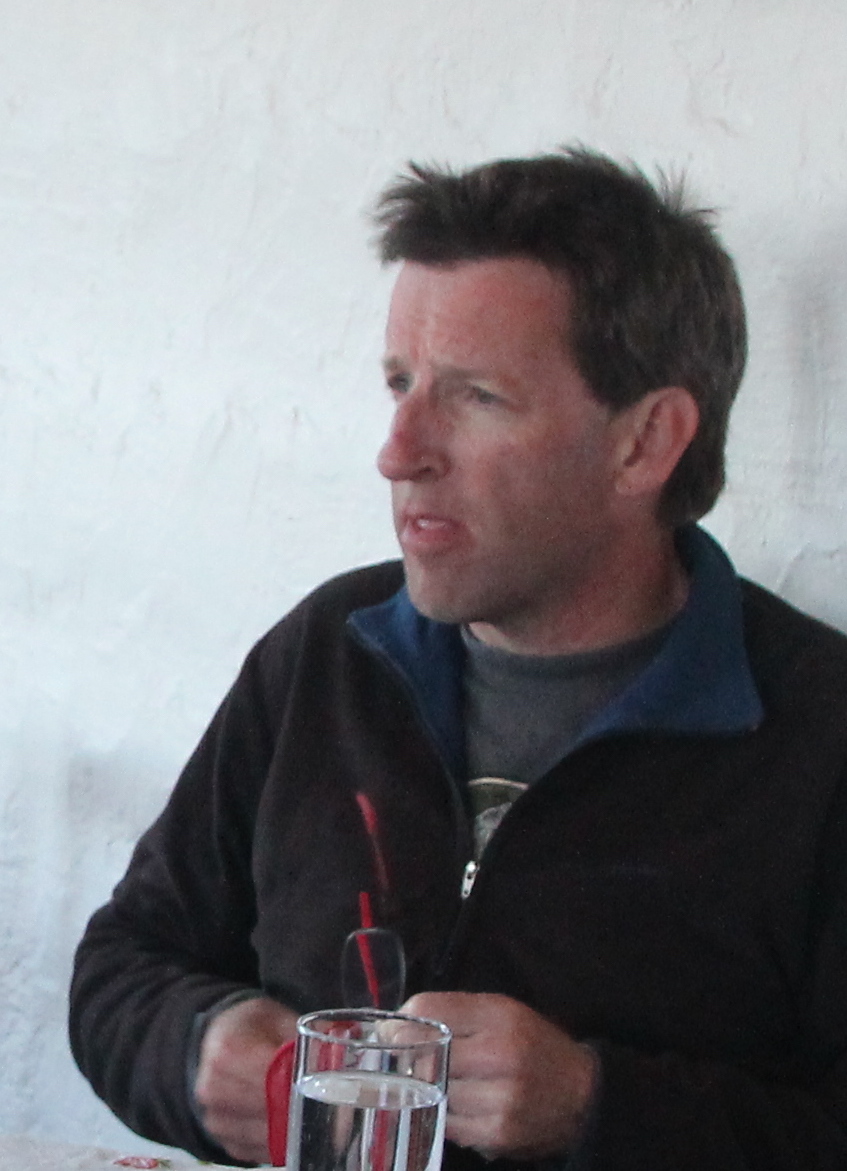 Usually I skip the nightly news. It’s not out of lack of interest, but because there are too many other things to do: work to catch up on, a kitchen to clean, lunch to prepare. Or it’s because it’s too cold out, or because once I do decide to pay attention the signs on grass and hard-packed dirt and sidewalk are simply too hard to catch, demanding too much patience and slowing down.
Usually I skip the nightly news. It’s not out of lack of interest, but because there are too many other things to do: work to catch up on, a kitchen to clean, lunch to prepare. Or it’s because it’s too cold out, or because once I do decide to pay attention the signs on grass and hard-packed dirt and sidewalk are simply too hard to catch, demanding too much patience and slowing down.
But once in a while conditions are just right and the show is irresistible. Like this week: 8 inches of snow during one day, and then that night as the sky was clearing to the coldest night of the year another inch of powder fell, the most perfect and finest snow of the season, seemingly as light and as dry as the sky from which it fell.
And so the next morning in every place where we in the neighborhood had cleared the previous day’s snow there was an inch-deep canvas inscribed with the movements of every resident that had been roaming the night.
The whole neighborhood was stitched together by the dainty trails of cats. Back in the chicken run, the busy scribblings of mice and juncos after the corn. Around the corner, the surprisingly stately march of a skunk whose marks always look like they were made by a little bear. Down the block, the spring of a fox heading off the sidewalk and into the deeper snow of a yard and the skinny hoof prints of three deer, animals we never see right around here by day. A side street held the scratchings of a small flock of collared doves that must have been looking for seeds—or maybe the grit they swallow to help them grind up the seeds—and near the dumpster by the townhouses the tracks of ravens and a torn Jack-in-the-Box bag were an obvious reminder that most of this coming and going is about food. Each trail is a kernel of a story—a tale invisible to most of us, but of absolute importance to the neighborhood resident who made it.
The headline, for those who don’t want to bother with all the details: On a cold night houses are closed up tight, but streets and yards teem with life.
Back when I was younger and underemployed and lived in the Midwest near a creek and a beach I was a regular news junkie, an investigator, combing mud and sand and fresh snow with the ardor of a forensic detective. I’d draw the tracks, being sure to get the size and shading just right. I can remember how excited I was to find coyote tracks—I knew that’s what they were, not dog tracks, because I’d seen the coyote, which was an unusual sighting back in those days, in the suburbs. Now they’re everywhere.
Here in Flagstaff I keep my eyes open for signs of the more unusual animals too. A coyote would be no big deal to me, though its presence would surely be important news for the cats. The roadrunner that was, sure enough, running on our road between snowbanks a couple of winters ago stood out, kind of like the unprepared tourists strolling around the cold sidewalks in sandals because, well, it’s Arizona, and who knew there’d be cold weather there? More recently a neighbor up the street saw a couple of javelinas gorging on windfall apples, and from elsewhere in town there were reports of coatis. Animals from the south, moving north: that’s real news, something beyond the day-to-day comings and goings of the locals, just as the report from Paris about how the nations of Earth have achieved at least some agreement about reining in the use of fossil fuels is real, historic, a welcome relief from the tedious and endless flood of polls and rebukes and counterclaims that makes up the political scene in this country. The latter is the kind of news that invigorates the partisans and exhausts most everyone else—no wonder so many people simply turn away from the whole spectacle.
It’s a funny thing about the ordinariness of daily news. The details don’t really matter. The skunk traipsed through the neighbors’ yard rather than ours; it was three deer, not four. No, those details aren’t truly important. On another night they’re likely different. But I’d argue that learning to read those details is important—not because of what the tracks themselves reveal, but because it is always good practice to learn a variety of ways of being in the world. Reading the nightly news, outdoors, is like learning a second language, an unspoken diction of place. And so when I get tired of what is too often in our human media it is welcome relief to head outside, no matter how deep the cold, to brush up on another, older vocabulary.

